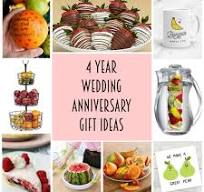Thoughtful Presents for Him: Gift Ideas to Impress
Presents for Him: Thoughtful Gift Ideas for Men
When it comes to finding the perfect gift for the men in your life, whether it’s your partner, father, brother, or friend, thoughtful presents can make all the difference. Here are some gift ideas that are sure to impress and show how much you care:
Personalized Gifts
Personalised gifts add a special touch to any present. Consider getting a customised item such as a monogrammed wallet, engraved watch, or personalised cufflinks. These gifts show that you’ve put thought into creating something unique just for him.
Tech Gadgets
For the tech-savvy man, consider gadgets like smartwatches, wireless earbuds, or portable chargers. These practical gifts cater to his interests and make his daily life easier and more enjoyable.
Grooming Products
A grooming kit or high-quality skincare products can be a great choice for men who like to take care of their appearance. Look for premium shaving sets, beard grooming kits, or luxurious colognes that will make him feel pampered.
Hobby-related Gifts
If he has a hobby or interest he’s passionate about, consider gifts that align with his hobbies. Whether it’s sports equipment, cooking tools, gardening supplies, or art materials, choosing a gift related to his interests shows that you support his passions.
Experience Gifts
Giving the gift of experiences can create lasting memories. Consider gifting tickets to a sports event, concert, cooking class, or outdoor adventure that he’ll enjoy. Experiences offer an opportunity to bond and create shared moments together.
Remember that the best presents come from the heart and reflect the recipient’s personality and preferences. Whether it’s a small token of appreciation or a grand gesture of love, thoughtful gifts show how much you value him in your life.
Top 9 FAQs on Choosing the Perfect Present for Him
- What are some unique gift ideas for men?
- How do I choose the perfect present for my partner?
- What are popular gifts for fathers?
- Where can I find affordable yet thoughtful gifts for him?
- Are personalised gifts a good choice for men?
- What tech gadgets are popular as gifts for men?
- How can I select grooming products that suit his preferences?
- What are some hobby-related gift ideas for men?
- Are experience gifts a good option for special occasions?
What are some unique gift ideas for men?
When searching for unique gift ideas for men, consider options that cater to his individual interests and passions. Personalised gifts, such as custom-made accessories or engraved items, add a special touch and show thoughtfulness. Tech gadgets that align with his tech-savvy side, grooming products for self-care enthusiasts, hobby-related gifts that resonate with his interests, and experience gifts that create lasting memories are all excellent choices. By selecting a gift that reflects his personality and preferences, you can ensure a truly unique and memorable present for him.
How do I choose the perfect present for my partner?
When selecting the ideal gift for your partner, it’s essential to consider their interests, preferences, and personality. Take note of what makes them happy and what they enjoy doing in their free time. Personalised gifts that hold sentimental value or reflect a shared memory can evoke emotions and strengthen your bond. Pay attention to subtle hints they may have dropped about items they desire or activities they wish to try. Ultimately, the perfect present for your partner is one that shows you understand and appreciate them, demonstrating thoughtfulness and love in every detail.
What are popular gifts for fathers?
When it comes to choosing gifts for fathers, popular options often include items that cater to their interests and preferences. Some common gift ideas for fathers include personalised accessories like engraved cufflinks or a monogrammed wallet, practical gadgets such as smart home devices or tools for DIY projects, premium grooming products like a high-quality shaving kit or luxury cologne, hobby-related gifts that align with their passions, and experience gifts such as tickets to a sports event or a relaxing spa day. Thoughtful presents that reflect his personality and show appreciation for all that he does are sure to make any father feel special and loved.
Where can I find affordable yet thoughtful gifts for him?
When searching for affordable yet thoughtful gifts for him, consider exploring online marketplaces that offer a wide range of options at budget-friendly prices. Websites like Oumama.co.uk provide a curated selection of quality products that cater to different interests and preferences. You can also check out local artisan markets, thrift stores, or discount stores for unique finds that won’t break the bank. Don’t underestimate the power of DIY gifts either – a handmade present can be both cost-effective and deeply meaningful. Remember, it’s the thought and effort you put into selecting the gift that truly matters, regardless of the price tag.
Are personalised gifts a good choice for men?
Personalised gifts can be an excellent choice for men when looking for a thoughtful and unique present. Whether it’s a monogrammed wallet, engraved watch, or customised cufflinks, personalised gifts show that you’ve taken the time to create something special just for him. These gifts add a personal touch and demonstrate your thoughtfulness in selecting a gift that is tailored to his individual style and preferences. Personalised gifts not only make the recipient feel appreciated but also serve as memorable keepsakes that he can cherish for years to come.
What tech gadgets are popular as gifts for men?
When it comes to tech gadgets that are popular as gifts for men, there are several options that are sure to impress. Smartwatches are a top choice, offering a blend of style and functionality with features like fitness tracking and notifications. Wireless earbuds are another sought-after gift, providing convenience and high-quality audio for on-the-go listening. Portable chargers are practical gifts that ensure he stays connected throughout the day. For the tech-savvy man, consider gadgets like Bluetooth speakers, smart home devices, or even virtual reality headsets for an immersive experience. These popular tech gifts cater to his interests and make for thoughtful presents that he’ll appreciate.
How can I select grooming products that suit his preferences?
When selecting grooming products that suit his preferences, it’s essential to consider his skin type, grooming routine, and personal style. Start by observing what products he currently uses and likes. If he has a specific brand or favourite scent, that can guide your choices. Consider his grooming needs, whether it’s shaving essentials, skincare products, or hair care items. Pay attention to any skin sensitivities or concerns he may have to ensure you choose gentle and suitable products. You can also opt for high-quality grooming sets that offer a variety of products tailored to different needs. Ultimately, communication is key – don’t hesitate to ask him directly about his preferences to ensure you select grooming products that he will love and appreciate.
What are some hobby-related gift ideas for men?
When it comes to choosing hobby-related gifts for men, the options are endless. Consider tailored gifts that align with his interests and passions. For the sports enthusiast, sports equipment or tickets to a game can be a great choice. Cooking aficionados may appreciate high-quality kitchen gadgets or a cooking class experience. Gardening enthusiasts would love tools or plants to enhance their garden. Art supplies, books on a favourite subject, or DIY kits are perfect for creative individuals. By selecting gifts that cater to his hobbies, you show thoughtfulness and consideration for his unique interests.
Are experience gifts a good option for special occasions?
Experience gifts can be a fantastic option for special occasions when considering presents for him. Unlike traditional material gifts, experience gifts offer the recipient the opportunity to create lasting memories and enjoy unique activities. Whether it’s a thrilling adventure, a relaxing spa day, or tickets to a favourite event, experience gifts provide a chance for him to try something new and exciting. These gifts not only show thoughtfulness and consideration but also offer the gift of time spent together, creating memorable moments that will be cherished for years to come.






